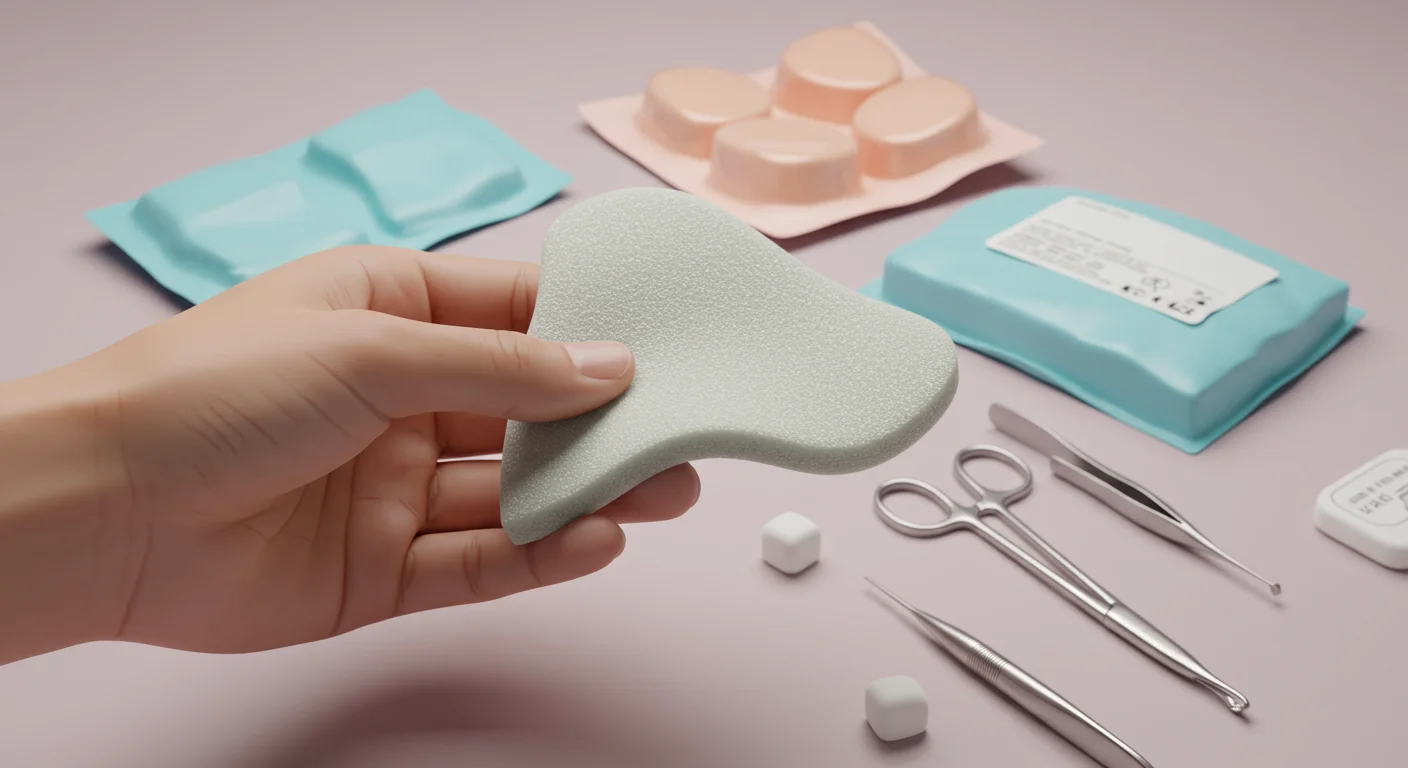오늘날의 빠르게 진행되는 세상에서, 내구성을 추구하는 여행자에게는 올바른 수하물을 선택하는 것이 중요합니다., 기능성, 그리고 스타일. 수하물 산업에서 상당한 관심을 얻은 물질 중 하나는 에틸렌 비닐 아세테이트입니다. (에바).
유연성과 강도의 독특한 조화로 유명합니다, Eva는 여행 가방 및 가방 제조에 선호되는 선택이되었습니다.. 이 기사는 EVA 수하물 케이스의 복잡성을 탐구합니다., 그들의 구성을 탐구합니다, 이익, 이 혁신적인 수하물 솔루션에 대한 포괄적 인 이해를 제공하기 위해 다른 자료와의 비교 및 일반적인 질문을 해결합니다..
에바 이해: 구성 및 특성
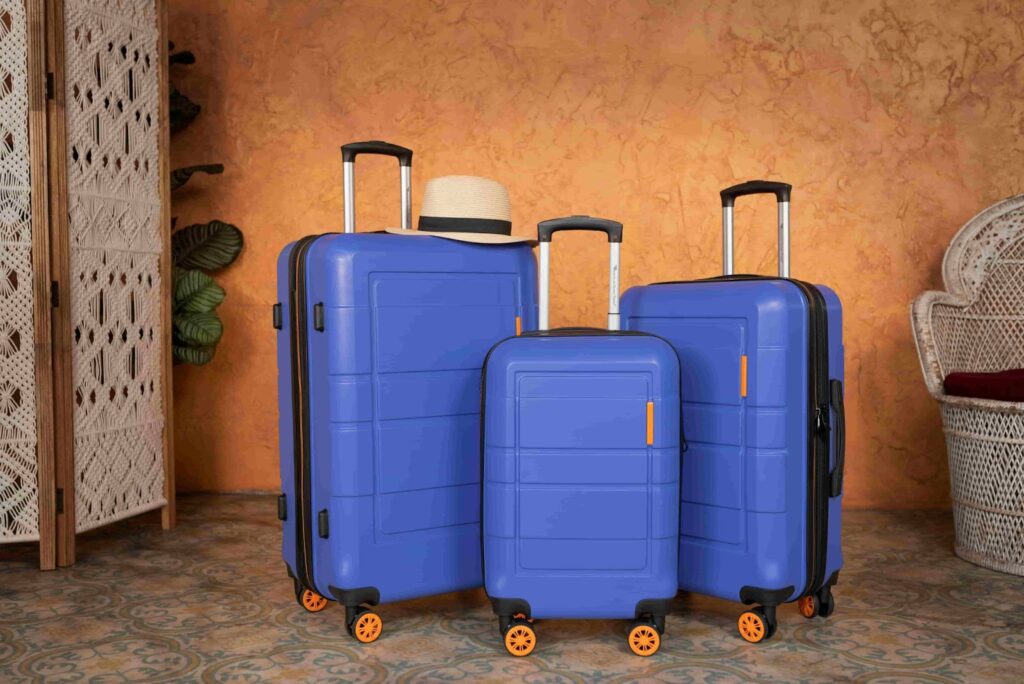
EVA는 에틸렌과 비닐 아세테이트를 결합한 공중 합체입니다., 플라스틱 및 고무 같은 품질을 모두 나타내는 재료를 생성합니다.. 이 독특한 구성은 몇 가지 주목할만한 특성을 부여합니다:
유연성
Eva의 고무 같은 부드러움.
가벼운 중량
재료의 저밀도는 수하물이 쉽게 운반하고 기동 할 수 있도록합니다., 여행 중 변형 감소.
내구성
EVA는 응력 균열에 저항력이 있으며 탁월한 인성을 가지고 있습니다, 수하물의 수명 향상.
방수
고유 한 방수 특성은 소지품을 습기로부터 보호합니다, 다양한 기상 조건을 만나는 여행자에게 중요한 기능.
이러한 속성으로 인해 Eva는 현대 여행자의 다양한 요구를 충족시키는 수하물을 제작하기위한 이상적인 후보입니다..
EVA 수하물 케이스의 특징
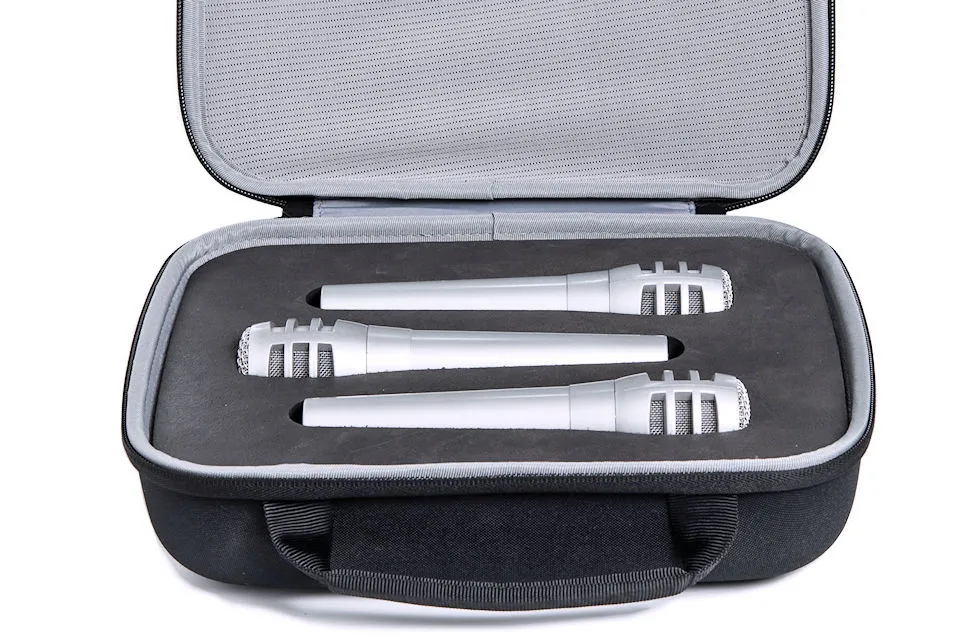
실용적이고 미적 특징의 조합으로 인해 Eva Luggage Cases는 시장에서 눈에 띄는 것입니다.:
반 강성 구조
하드 쉘과 소프트 쉘 수하물 사이의 균형을 제공합니다, EVA 케이스는 불규칙한 형태의 품목을 수용 할 수있는 약간의 유연성을 허용하면서 보호합니다..
충격 저항 향상
충격을 흡수하는 재료의 능력은 수하물 내부의 섬세한 품목이 운송 중에 더 잘 보호되도록합니다..
미학적 다양성
EVA는 다양한 모양과 질감으로 성형 될 수 있습니다, 다양한 소비자 선호도를 수용하는 혁신적이고 세련된 디자인을 허용합니다..
친환경 옵션
EVA 폼 기술의 발전은 지속 가능한 대안의 개발로 이어졌습니다., 재활용 및 바이오 기반 재료를 포함합니다, 환경 친화적 인 제품에 대한 수요 증가와 일치합니다.
EVA 대. 전통적인 플라스틱: 비교 분석
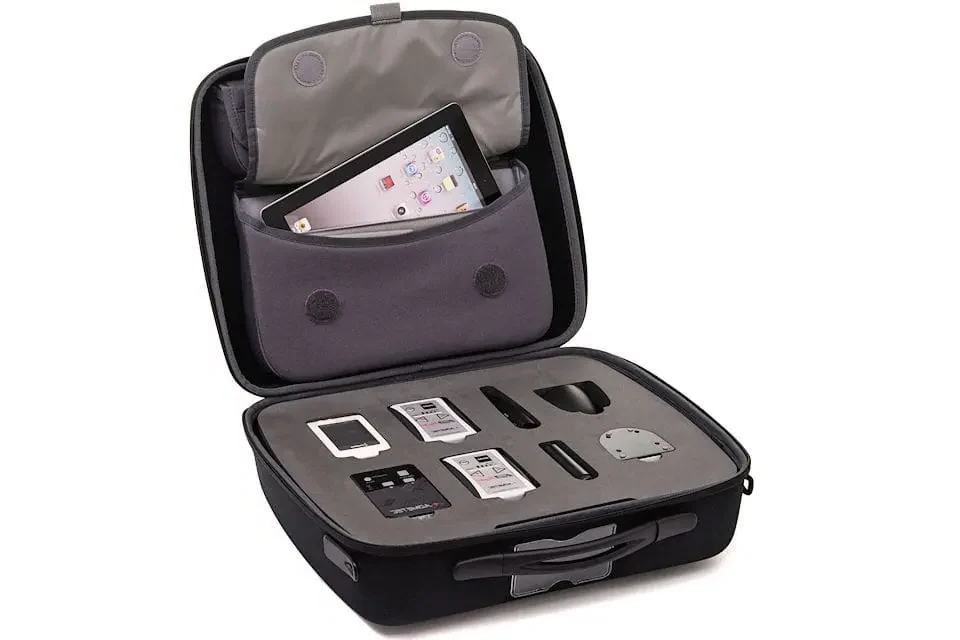
수하물 재료를 평가할 때, 폴리 카보네이트와 같은 전통적인 플라스틱에 대해 EVA가 어떻게 쌓이는 지 고려해야합니다. (PC) 및 아크릴로 니트릴 부타디엔 스티렌 (ABS):
무게
EVA 수하물은 일반적으로 단단한 플라스틱보다 가볍습니다, 항공사 중량 제한을 더 쉽게 처리하고 준수합니다.
내구성
하드 쉘 플라스틱은 강력한 보호를 제공합니다, 심각한 영향을받는 경우 크래킹 경향이 있습니다. EVA의 유연성을 통해 충격을보다 효과적으로 흡수 할 수 있습니다, 손상의 위험을 줄입니다.
방수
두 재료 모두 방수 특성을 제공합니다; 하지만, Eva의 원활한 구조는 수분 유입에 대한 탁월한 보호를 제공 할 수 있습니다..
설계 유연성
Eva의 성형 성은 독특한 모양과 디자인을 생성 할 수 있습니다., 전통적인 플라스틱은 폼 팩터에 한계가있을 수 있습니다.
요약, EVA 수하물 케이스는 가벼운 디자인과 내구성의 조화로운 조화를 제공합니다., 신뢰할 수 있고 세련된 옵션을 찾는 여행자들에게 매력적인 선택으로.
Eva Luggage의 장단점
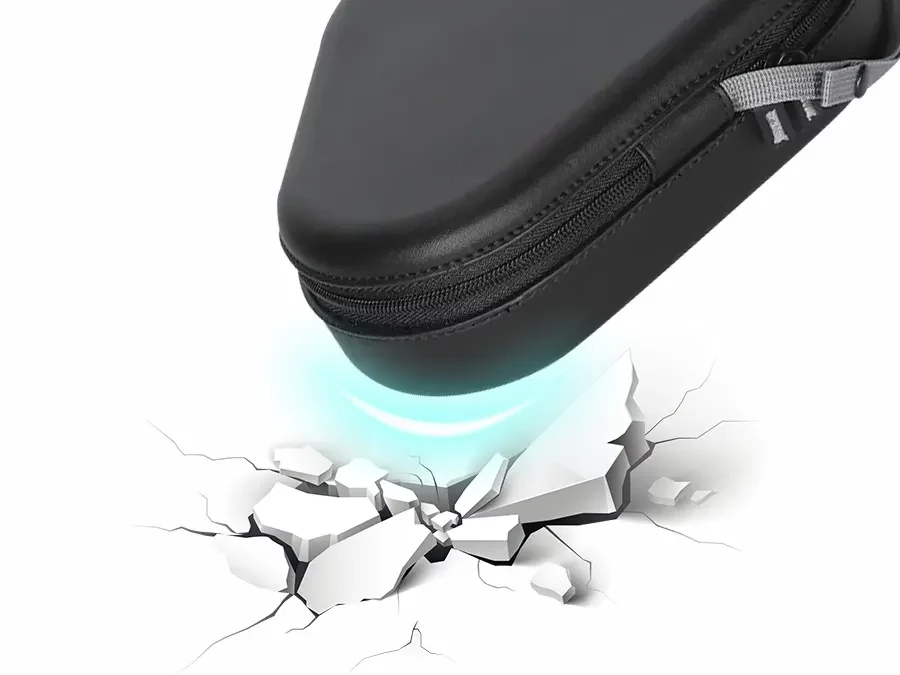
Eva Luggage의 장점과 잠재적 단점을 이해하면 소비자가 정보에 입각 한 결정을 내릴 수 있도록 도와줍니다.:
프로:
- 경량 구조
수하물 운반 및 조작의 부담을 완화시킵니다, 특히 긴 여행 중에.
- 내구성과 충격 저항성
소지품에 대한 안정적인 보호 기능을 제공합니다, 방울이나 노크로 인한 손상 가능성을 줄입니다.
- 방수성
비와 유출로 인한 내용물, 포장 품목의 무결성 유지.
- 디자인 다목적 성
개별 취향에 맞는 광범위한 미학 옵션을 제공합니다..
단점:
- 제한된 강성
그것은 단단한 껍질 플라스틱과 매우 연약한 품목에 대해 동일한 수준의 보호를 제공하지 않을 수 있습니다..
- 열 감도
고온에 장기간 노출되면 시간이 지남에 따라 재료의 무결성에 영향을 줄 수 있습니다..
- 비용 변동성
고품질 EVA 수하물은 일부 플라스틱 대안에 비해 프리미엄 가격대에 올 수 있습니다..
EVA 수하물 기술의 혁신

수하물 산업은 계속 발전하고 있습니다, EVA 폼 기술의 발전으로 길을 이끌고 있습니다:
항균 특성
항균제를 EVA 폼에 통합하면 박테리아와 곰팡이의 성장을 억제하는 데 도움이됩니다., 수하물 인테리어의 위생 및 청결성 홍보.
스마트 기능
EVA의 적응성은 GPS 추적 및 내장 충전 포트와 같은 스마트 기술을 통합 할 수 있습니다., 기술에 정통한 여행자의 편의성 향상.
지속 가능한 재료
친환경 EVA 대안의 개발, 재활용 및 바이오 기반 폼을 포함합니다, 환경 문제를 해결하고 친환경 의식 소비자에게 호소합니다.
이러한 혁신은 지속적인 개선 및 기술 통합을 통해 현대 여행자의 발전하는 요구를 충족시키기위한 업계의 약속을 반영합니다..
최고의 EVA 수하물 브랜드
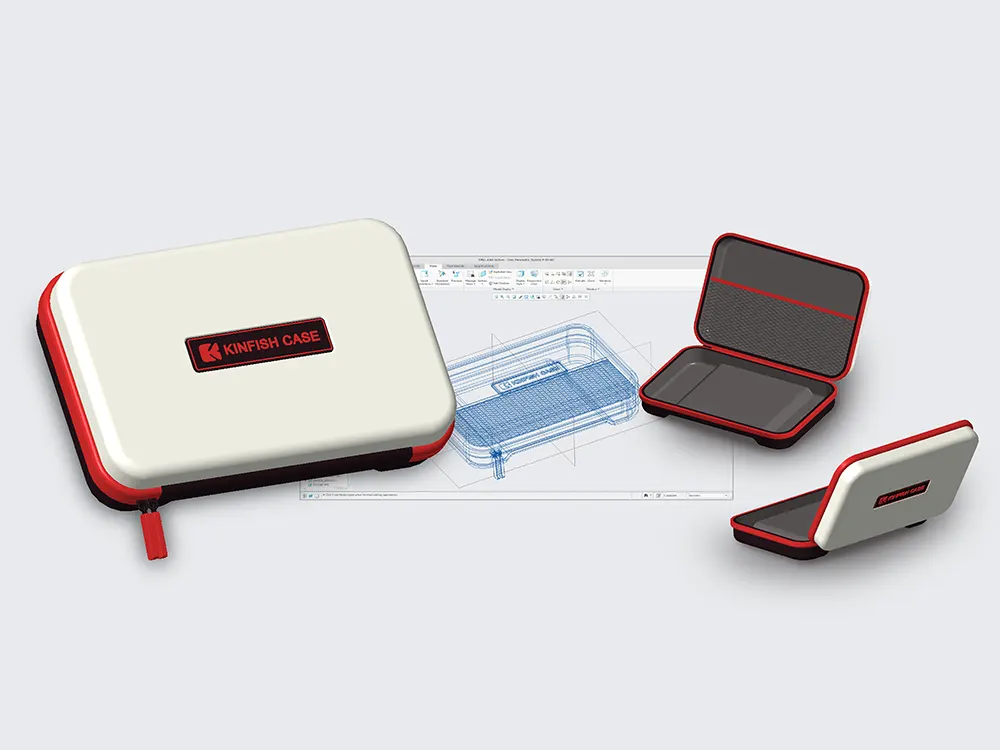
고품질 EVA 수하물 옵션을 제공함으로써 여러 브랜드가 스스로를 구별했습니다.:
Kinfish Case
우리의 사명은 분명합니다: 생성합니다 맞춤형 케이스 각 고객만큼 독특한 솔루션, 의료에서 실외 및 소비자 전자 장치에 이르기까지 다양한 시장에 걸쳐.
삼소 나이트
내구성이 뛰어나고 세련된 디자인으로 유명합니다, Samsonite는 EVA 재료를 통합하여 가벼우면서도 강력한 수하물 솔루션을 만듭니다..
미국 관광객
품질 또는 미적 호소력에 타협하지 않는 다양한 저렴한 EVA 수하물 옵션을 제공합니다..
TravelPro
빈번한 여행자와 전문가가 선호합니다, TravelPro의 Eva Luggage는 기능을 세련된 디자인과 결합합니다.
델시 파리
프랑스에서 영감을 얻은 우아함으로 유명합니다, Delsey는 EVA를 수하물 라인에 통합하여 형태와 기능을 모두 제공합니다..
Swisgate
실용성과 내구성에 중점을 둔 신뢰할 수있는 EVA 수하물 옵션을 제공합니다., 광범위한 여행 요구를 충족합니다.
이 브랜드는 다양한 소비자 선호도 및 여행 요구 사항을 충족하는 수하물을 만드는 데 EVA의 효과적인 사용을 예시합니다..
결론
EVA 수하물 케이스는 조화로운 혁신 융합을 나타냅니다, 기능성, 그리고 스타일. 이 자료의 고유 한 속성은 여행자에게 가벼운 것을 제공합니다, 튼튼한, 다양한 여행 시나리오에 적응하는 다목적 옵션.
수하물 산업이 EVA 기술의 발전을 수용함에 따라, 소비자는 진화하는 요구를 충족시키는 더 세련된 제품을 예상 할 수 있습니다.. 충격 저항의 우선 순위 지정 여부, 설계 유연성, 또는 친환경, Eva Luggage는 여행 장비에서 신뢰성과 정교함을 추구하는 현대 여행자에게 매력적인 선택으로 서 있습니다..
FAQ
~이다 에바 고무 또는 플라스틱?
EVA는 고무와 플라스틱의 특성을 나타내는 공중 합체입니다.. 고무의 탄력성과 부드러움을 플라스틱 가공성과 결합합니다., 다양한 응용 분야에 적합한 다목적 재료를 초래합니다, 수하물 제조를 포함하여.
EVA 플라스틱 방수입니다?
EVA는 본질적으로 방수성입니다, 수분과 가벼운 비에 대한 보호를 제공합니다. 하지만, 완전히 방수가 아닙니다.
물 또는 침수에 대한 연장 된 노출은 수분 침투로 이어질 수 있습니다., 특히 이음새와 지퍼를 통해. 일부 제조업체는 방수 지퍼와 추가 코팅을 통합하여 방수 기능을 향상시킵니다..
더 낫습니다: EVA 또는 전통적인 플라스틱?
EVA와 전통적인 플라스틱 사이의 선택은 개별 선호도와 여행 요구에 달려 있습니다.. Eva는 경량을 제공합니다, 유연한, 디자인 다목적 성이있는 충격 방지 옵션.
폴리 카보네이트와 같은 전통적인 플라스틱은 엄격한 것을 제공합니다, 강력한 보호는 있지만 심각한 충격으로 더 무겁고 균열이 발생하기 쉬울 수 있습니다.. 경량 및 유연한 수하물을 우선시하는 여행자는 EVA를 선호 할 수 있습니다, 최대 강성을 찾는 사람들은 전통적인 플라스틱을 선택할 수 있습니다..


